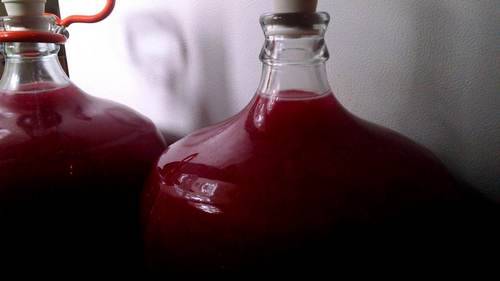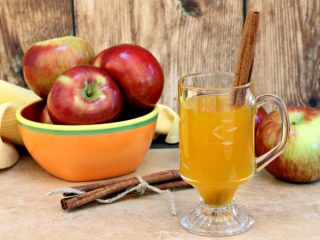Content
In the classic version of making wine, the pulp is usually squeezed out and thrown away as waste. But lovers of low-alcohol wine can re-prepare the drink from the pomace. Moreover, you can make such wine from any fruit and berries. These can be apples, currants, grapes, etc. Further, in the article we will see the technology for preparing secondary wine. It is not much different from the classic recipe, but has some important nuances.
Features of secondary wine
Coloring substances and elements responsible for the taste of wine are found mainly in the juice. For this reason, the secondary wine cannot be as bright, rich and aromatic as the first. Some people make wine again and then distill it into moonshine.
Once the juice is separated from the pulp, a small amount of sugar will remain, approximately 1 to 5%. Also, extractive substances remain in the skin and pulp. This prompted Burgundy Petiot (a French winemaker) to think about how to use the remaining raw materials. He started making secondary wine from grapes, but the same method can be used to prepare a drink from other fruits.
The method is that the squeezed juice is replaced with sugar syrup. The sugar concentration in it should be 20%. Take almost equal or equal amounts of cake and syrup, and then infuse the mixture, like regular wine.Thus, you can get a good drink with a strength of 10 or 12 degrees.
Even in France they began to make “picket”. This is the same drink made from cake with a strength of 1 to 3%. In this case, the cake is not squeezed hard. Only dark and sweet grape varieties are suitable for its preparation. This squeezed pulp is poured with plain water and left for further fermentation. In our area, this is not always convenient, since most people extract juice with a special juicer or press. In addition, most varieties of grapes and apples that are used to make wine have a sour taste.
Selection of raw materials for wine
Most often, dark grape pomace is used to make secondary wine. It is usually grown in warm regions of the country. The popular variety “Isabella” is not suitable for making “petio”. It is too sour, especially the skin, from which the future drink is prepared. If you use apple squeezes or grape pulp from light varieties to make wine, the drink will turn out almost transparent and will not have a pronounced taste.
In order for a small amount of microelements and tannins to remain in the squeezed pulp, you should not squeeze the raw material too hard. Leave a little juice so that the drink has a beautiful color. You need to put the cake into fermentation on the very first day, or better yet, right away. Otherwise, oxidation of the pulp or acetic souring may occur. It is also important not to overdo it so as not to crush the seeds. Then the drink will be bitter.
Homemade pomace wine
To make wine, you can use not only regular sugar, but also fructose and dextrose (another name for glucose). It is important to consider that fructose is 70 percent sweeter than regular beet sugar, and glucose is 30 percent less sweet.
So, we need the following ingredients:
- from 6 to 7 liters of freshly squeezed pulp;
- 5 liters of cold water;
- kilogram of granulated sugar.
In the classic French version, the amount of cake should be equal to the amount of sugar syrup. But since in Russia the grapes are not so sweet and extractive, it is recommended to use 20 or 40% more pomace. It is also very important to thoroughly wash all containers used for cooking. They must be sterilized in boiling water or over steam.
Wine making technology
- The first step is to dissolve the sugar in water, or rather, not all the sugar, but only 800 grams.
- The cake is transferred into a prepared bottle. Pour the resulting syrup over everything and mix. There is no need to fill the container to the brim. About 20% of the bottle is left unfilled.
- Next, you need to make a water seal. They also use a regular rubber glove in which a hole is made. The hole shouldn't be too big. You can pierce one of the fingers with a regular thin needle. This method is no less effective than a lid with a tube.
- Then the container is transferred to a dark place. The air temperature in it should not fall below +18 °C and rise above +28 °C. It is advisable to open the water seal for a few minutes every 12 hours. At this time, you can mix the contents with a clean wooden stick so that the floating pulp falls to the bottom.
- After 24 hours, foam will appear on the surface of the wine and a slight hiss will be heard. This is a correct reaction and indicates a successful start to fermentation. If fermentation has not started, it is necessary to add special wine yeast to the mixture.
- After 2 weeks the pulp should become colorless. This means it’s time to strain the wine and squeeze out the pulp thoroughly. Add the remaining 200 grams of sugar to the resulting juice and pour everything into a clean container.
- In general, the wine should ferment for up to 50 days. You can tell that the wine is completely ready by its external signs. If no bubbles are released for 2 days or the glove is deflated, it means that the drink has stopped fermenting. At this time, a layer of sediment should form at the bottom of the wine bottle.
- Now you can drain the wine from the bottle. This is done using a tube. The bottle is placed on a small hill and a tube is lowered inside, the other end of which should be placed in a clean container of a suitable size. Now you can taste the drink and add sugar or alcohol to it if you wish.
- Next, the secondary wine is poured into clean glass bottles and taken to a dark, cool room for further storage. You can place new wine in the refrigerator if there is no suitable room. The longer the drink is stored, the more the flavor will develop. It is recommended to drink this wine only after 3 months of aging. It’s even better if the drink sits in a suitable place for six months.
Conclusion
This is how you can easily make good wine from waste at home. Experienced winemakers don’t just throw anything away. The pulp remaining during squeezing can ferment again if everything is done according to the instructions.This process is very similar to regular wine preparation, only it uses sugar syrup rather than juice. The taste and aroma of the drink, of course, is not the same as the first wine, but still, it’s better than nothing.














